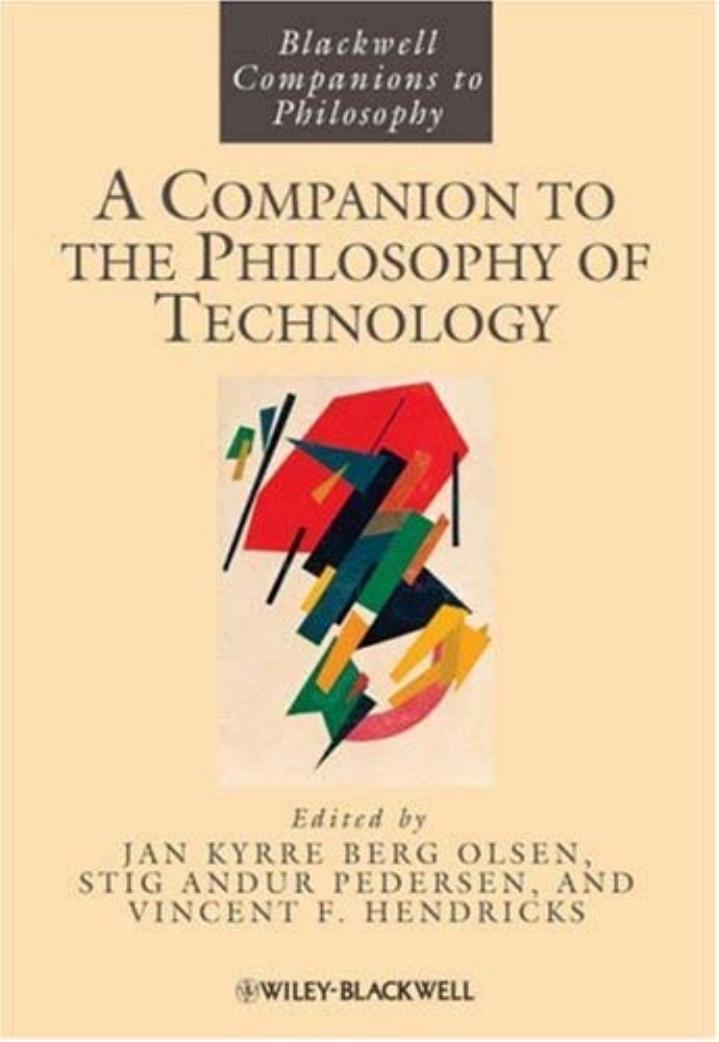A Companion to the Philosophy of Technology by Unknown

Author:Unknown
Language: eng
Format: epub, pdf
Publisher: John Wiley & Sons, Incorporated
Published: 2012-10-02T00:00:00+00:00
The Science of Global Warming
By absorbing infra-red or “heat” radiation from the earth’s surface, “greenhouse gases” present in the atmosphere, such as water vapor and carbon dioxide, act as blankets over the earth’s surface, keeping it warmer than it would otherwise be. The existence of this natural “greenhouse effect” has been known for nearly two hundred years; it is essential to the provision of our current climate, to which ecosystems and we humans have adapted.
Since the beginning of the industrial revolution around 1750, one of these greenhouse gases, carbon dioxide, has increased by over 35 percent and is now over 380 parts per million (ppm) – a higher concentration in the atmosphere than for many hundreds of thousands of years. Chemical analysis demonstrates that this increase is due largely to the burning of fossil fuels – coal, oil and gas. If no action is taken to curb these emissions, the carbon dioxide concentration will rise during the twenty-first century to two or three times its pre-industrial level.
The climate record over past centuries shows a lot of natural variability arising from external factors (such as changes in the sun’s energy or the influence of volcanoes) or from internal variations within the climate system. However, the rise in global average temperature (and its rate of rise) during the twentieth century is well outside this range of known natural variability. The twelve warmest years in the instrumental record that goes back to 1860 have occurred since 1990. A more striking statistic is that each of the first eight months of 1998 was the warmest on record for that month. There is very strong evidence that most of the warming over the last fifty years is due to the increase of greenhouse gases, especially carbon dioxide.
Over the twenty-first century the global average temperature is projected to rise by between 2 and 6°C (3.5 to 11°F) from its pre-industrial level; the range represents different assumptions about greenhouse gas emissions and the sensitivity of the climate. For global average temperature, a rise of this amount is large. Its difference between the middle of an ice age and the warm periods in between is only about 5 or 6°C. So, associated with likely warming in the twenty-first century will be a rate of change of climate equivalent to, say, half an ice age in less than a hundred years – a larger rate of change than for at least 10,000 years. Adapting to this will be difficult for both humans and many ecosystems.
Download
A Companion to the Philosophy of Technology by Unknown.pdf
This site does not store any files on its server. We only index and link to content provided by other sites. Please contact the content providers to delete copyright contents if any and email us, we'll remove relevant links or contents immediately.
Kathy Andrews Collection by Kathy Andrews(10551)
The remains of the day by Kazuo Ishiguro(7575)
Spare by Prince Harry The Duke of Sussex(4219)
Paper Towns by Green John(4177)
The Body: A Guide for Occupants by Bill Bryson(3814)
Be in a Treehouse by Pete Nelson(3233)
Harry Potter and the Goblet Of Fire by J.K. Rowling(3075)
Goodbye Paradise(2974)
Never by Ken Follett(2905)
Into Thin Air by Jon Krakauer(2711)
The Remains of the Day by Kazuo Ishiguro(2627)
The Genius of Japanese Carpentry by Azby Brown(2614)
The Cellar by Natasha Preston(2603)
Drawing Shortcuts: Developing Quick Drawing Skills Using Today's Technology by Leggitt Jim(2537)
120 Days of Sodom by Marquis de Sade(2445)
Architecture 101 by Nicole Bridge(2356)
Machine Learning at Scale with H2O by Gregory Keys | David Whiting(2314)
The Man Who Died Twice by Richard Osman(2307)
Industrial Automation from Scratch: A hands-on guide to using sensors, actuators, PLCs, HMIs, and SCADA to automate industrial processes by Olushola Akande(2120)
